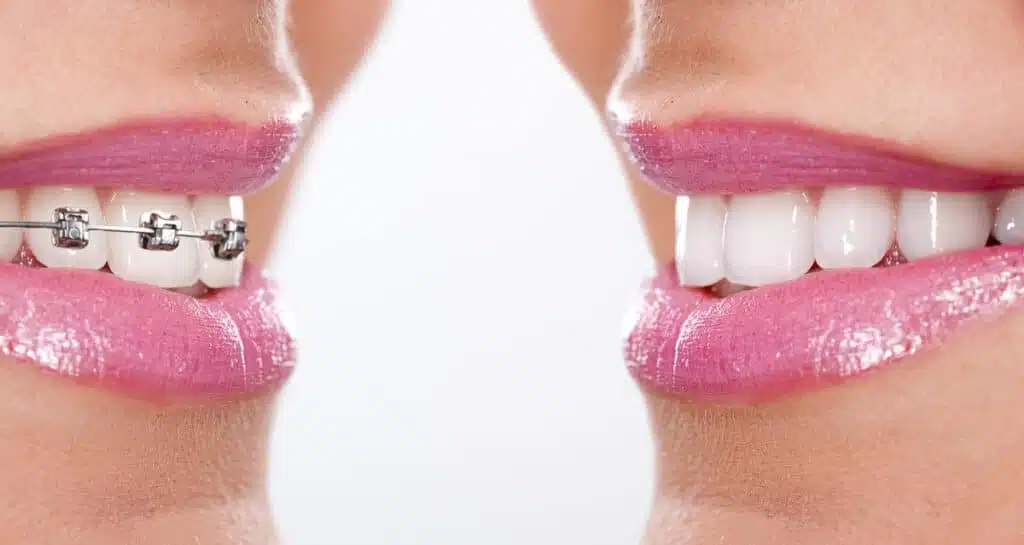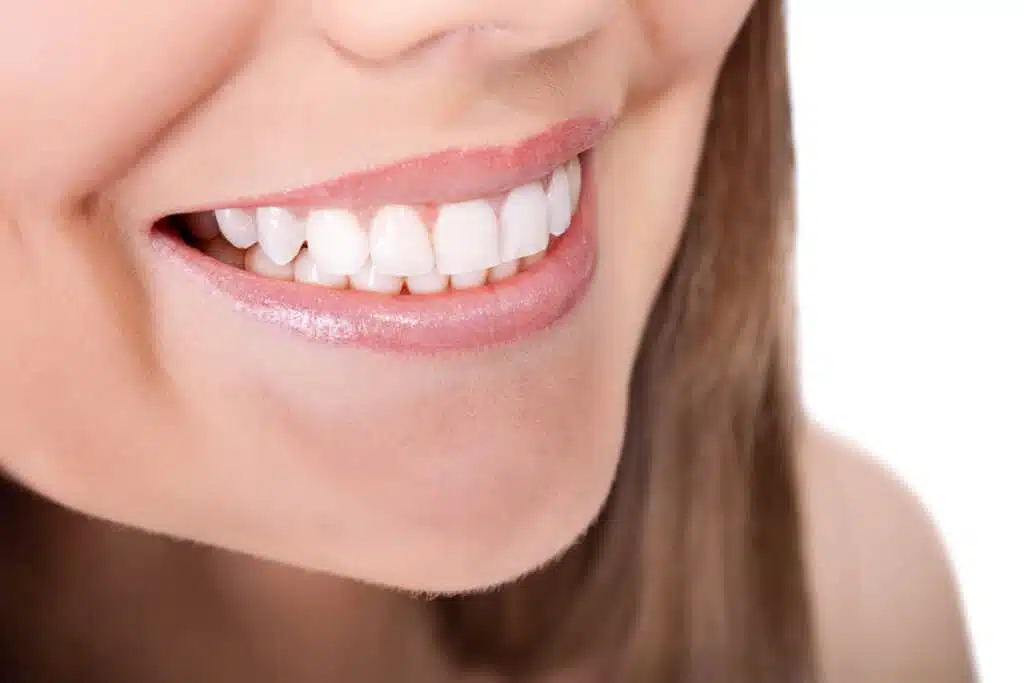Invisalign vs. Braces – what is the Better Option? You’ll find the Answer to this Question and much more Information in this Article.
Orthodontic treatment has become increasingly popular among individuals seeking to enhance their smiles and correct dental misalignments.
When it comes to orthodontics, two popular options are Invisalign and braces. Both treatments aim to straighten teeth and improve oral health but differ in various aspects.
In this article, we will compare Invisalign and traditional braces to help you decide which option is best for you.

Invisalign vs. Braces: What is Invisalign?
Invisalign is a modern orthodontic treatment that uses clear, removable aligners to straighten teeth.
These aligners are custom-made to fit snugly over your teeth and gradually shift them into proper alignment.
Invisalign aligners are virtually invisible, making them a discreet choice for individuals who wish to improve their smiles without drawing attention.
What are traditional Braces?
Conversely, braces are a traditional orthodontic treatment that involves attaching metal or ceramic brackets to the teeth.
These brackets are connected with wires that apply gentle pressure to guide the teeth to their correct positions.
Braces are a time-tested method for correcting dental misalignments, offering effective results.
Differences Between Invisalign and Braces
1. Effectiveness and Treatment Duration
Invisalign and braces effectively straighten teeth, but the treatment duration can vary.
Invisalign treatment typically takes around 12 to 18 months, while braces treatment may require a longer period, often ranging from 18 to 36 months.
The actual duration depends on the complexity of the case and the patient’s compliance with the treatment plan.
2. Comfort and Convenience
Invisalign aligners are known for their comfort since they are made of smooth plastic without sharp edges or protruding wires.
They can be easily removed when eating or brushing, allowing for more flexibility in daily routines.
Braces, although highly effective, may cause temporary discomfort and soreness due to the presence of brackets and wires.
3. Aesthetics and Visibility
One of the significant advantages of Invisalign is its nearly invisible appearance.
The clear aligners blend seamlessly with your natural teeth, making them an ideal choice for those concerned about the visibility of orthodontic appliances.
On the other hand, braces are more noticeable since they involve metal or ceramic brackets affixed to the teeth.
4. Oral Hygiene and Maintenance
Maintaining proper oral hygiene is crucial during orthodontic treatment. Invisalign aligners are removable, allowing for easy cleaning of the aligners and teeth.
On the other hand, braces require extra attention while brushing and flossing to ensure that no food particles get trapped between the brackets and wires.
5. Dietary Restrictions
With Invisalign, you can enjoy your favorite foods without restrictions. Since the aligners are removable, there are no limitations on what you can eat.
Conversely, braces come with certain dietary restrictions. Sticky or hard foods should be avoided to prevent damage to the brackets and wires.

6. Affordability
The cost of orthodontic treatment varies depending on several factors, such as the complexity of the case and the geographical location.
In general, braces tend to be more affordable compared to Invisalign. However, it is essential to consult with an orthodontist to determine the precise cost based on your specific needs.
7. Who Can Use Invisalign or Braces?
Both Invisalign and braces can effectively treat a wide range of dental misalignments. However, there may be cases where one treatment option is more suitable than the other.
Orthodontists evaluate individual needs during a consultation to determine the best treatment approach.
Factors such as the severity of the misalignment, age, and oral health play a role in this decision-making process.
8. Consultation and Treatment Process
To start your orthodontic journey, it is recommended to schedule a consultation with an experienced orthodontist.
During this initial visit, the orthodontist will evaluate your oral health, discuss your treatment goals, and recommend the most suitable option.
They will also explain the treatment process, including the number of appointments and expected progress.
9. Potential Risks and Side Effects
As with any dental procedure, there are potential risks and side effects associated with both Invisalign and braces.
Some patients may experience a temporary discomfort or minor mouth irritation with Invisalign during the initial adjustment period.
Braces may cause mouth sores or discomfort due to the presence of brackets and wires. However, these issues can be managed with proper care and guidance from your orthodontist.
Conclusion on the Topic: “Invisalign vs Braces”
Invisalign and braces are effective orthodontic treatments that can help you achieve a straighter smile and improve oral health.
While Invisalign offers advantages such as discreet appearance and removable aligners, braces are a reliable and time-tested solution.
The choice between the two ultimately depends on individual preferences, treatment needs, and budget considerations.
Consulting with an orthodontist is crucial to determine the most suitable option for your specific case.

FAQs on the Topic: “Invisalign vs Braces”
How long does Invisalign treatment take?
Invisalign treatment typically takes around 12 to 18 months, but the duration can vary depending on the complexity of your case.
Are braces only for teenagers?
No, braces can be used by individuals of all ages. It’s never too late to correct dental misalignments and improve your smile.
Can I eat normally with Invisalign?
Yes, one of the advantages of Invisalign is that the aligners are removable, allowing you to eat your favorite foods without restrictions.
Do braces hurt?
Braces may cause temporary discomfort or soreness, especially after adjustments. However, this discomfort can be managed with over-the-counter pain relievers and orthodontic wax.
Can I play sports with braces or Invisalign?
Yes, you can play sports with braces or Invisalign. However, wearing a mouthguard to protect your teeth and appliances during physical activities is recommended.
- About the Author
- More info


Leave a Reply